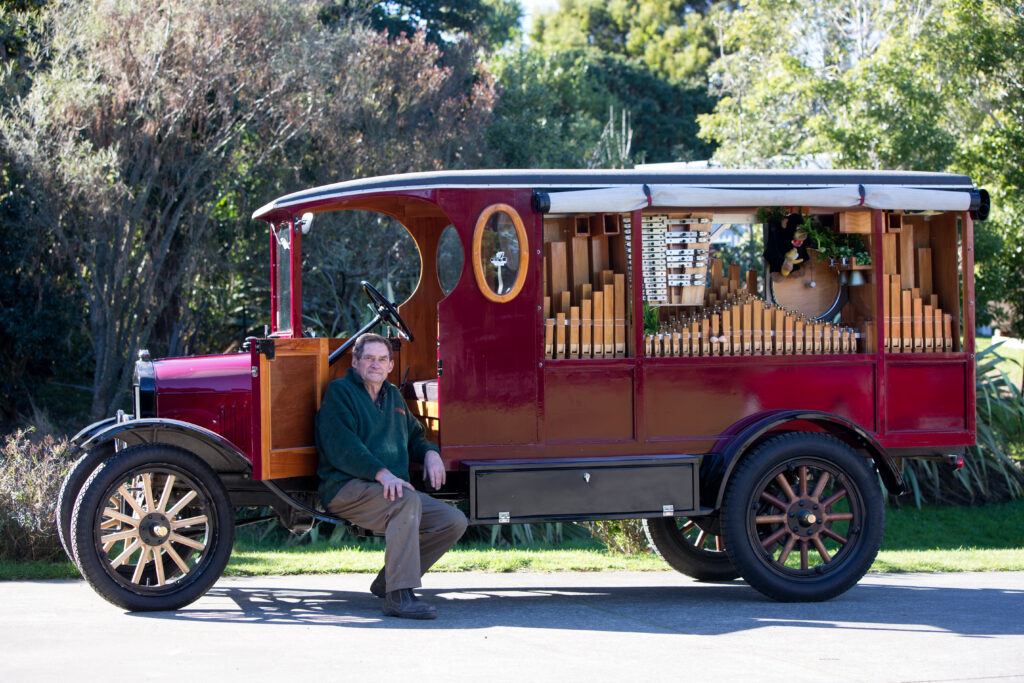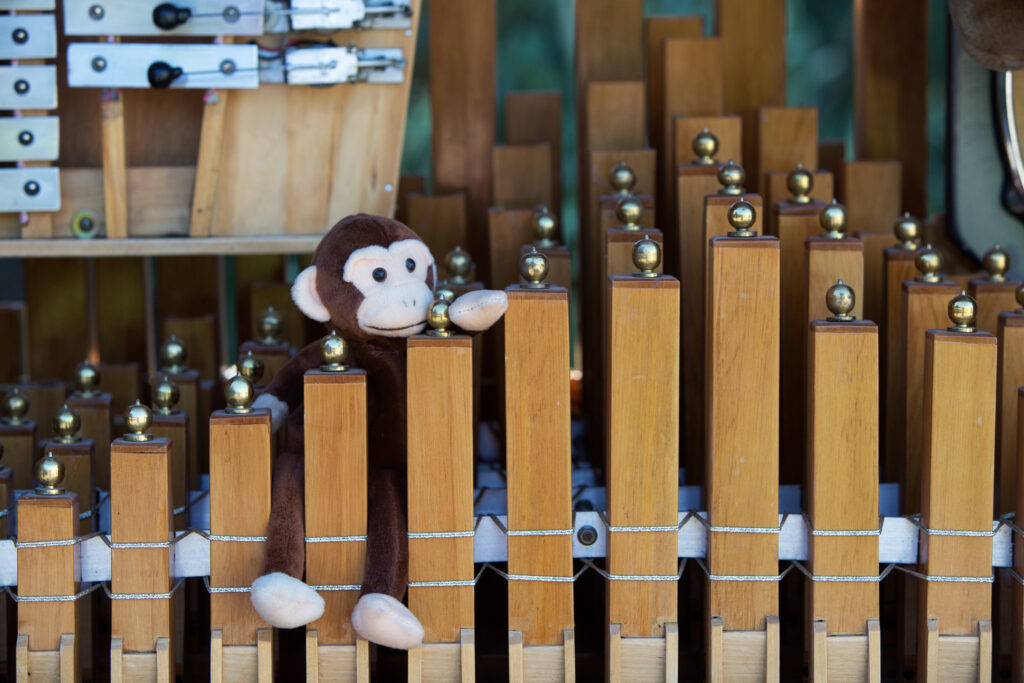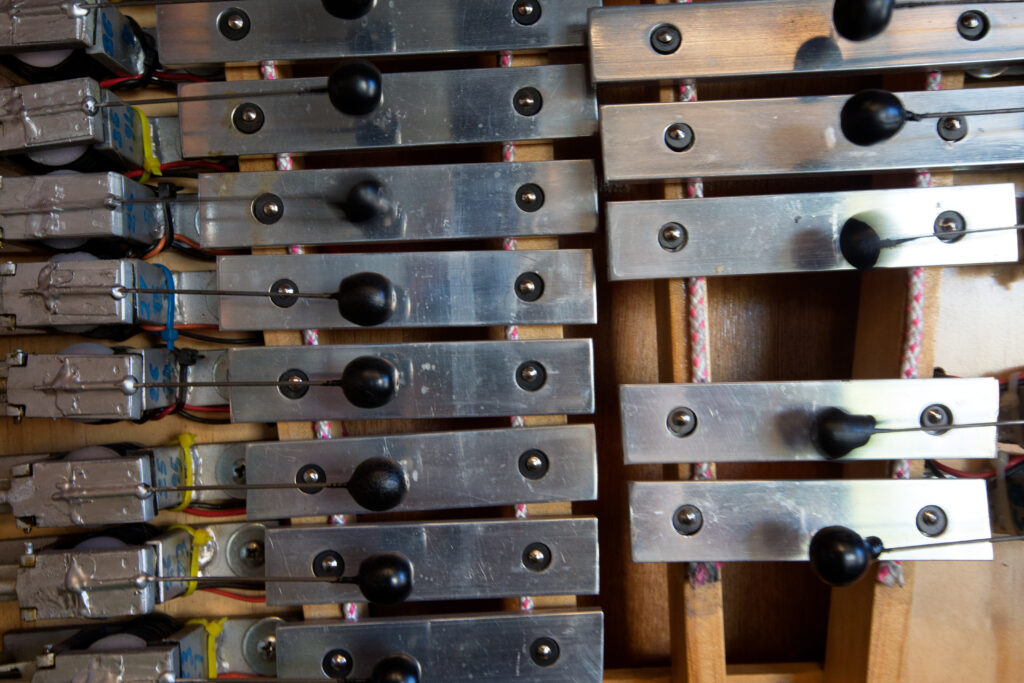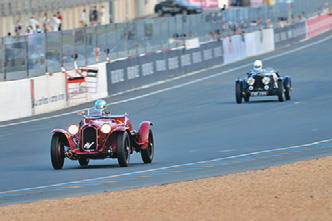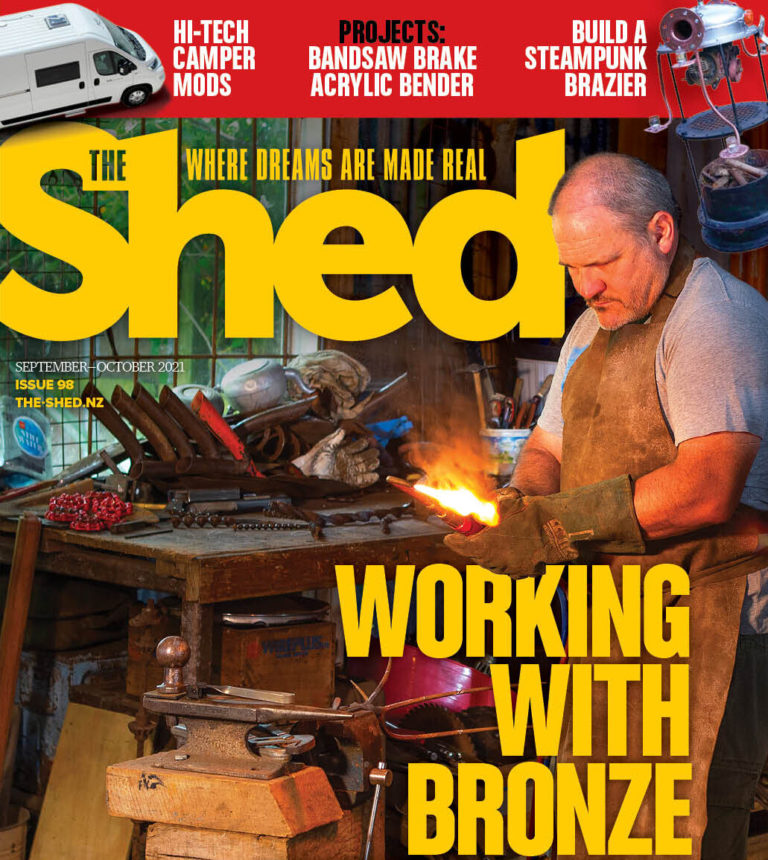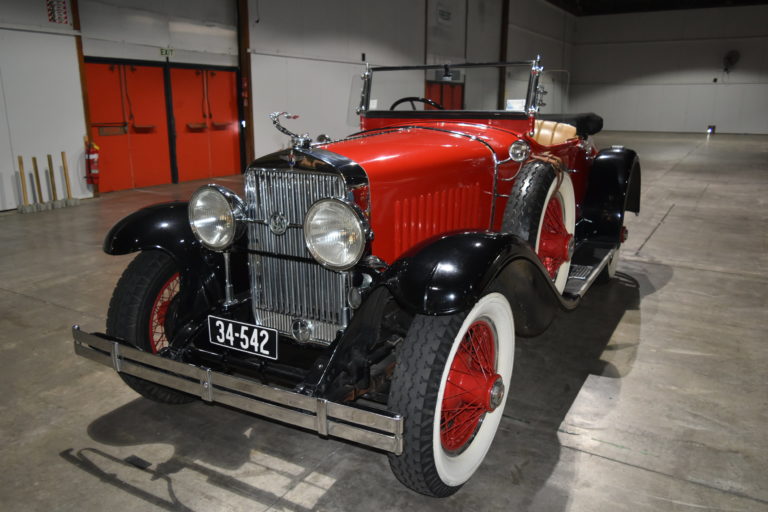A former panel beater can turn his hand to most jobs at hand – from restoring cars to making a 64-note organ
By Helen Frances
Photographs: Tracey Grant
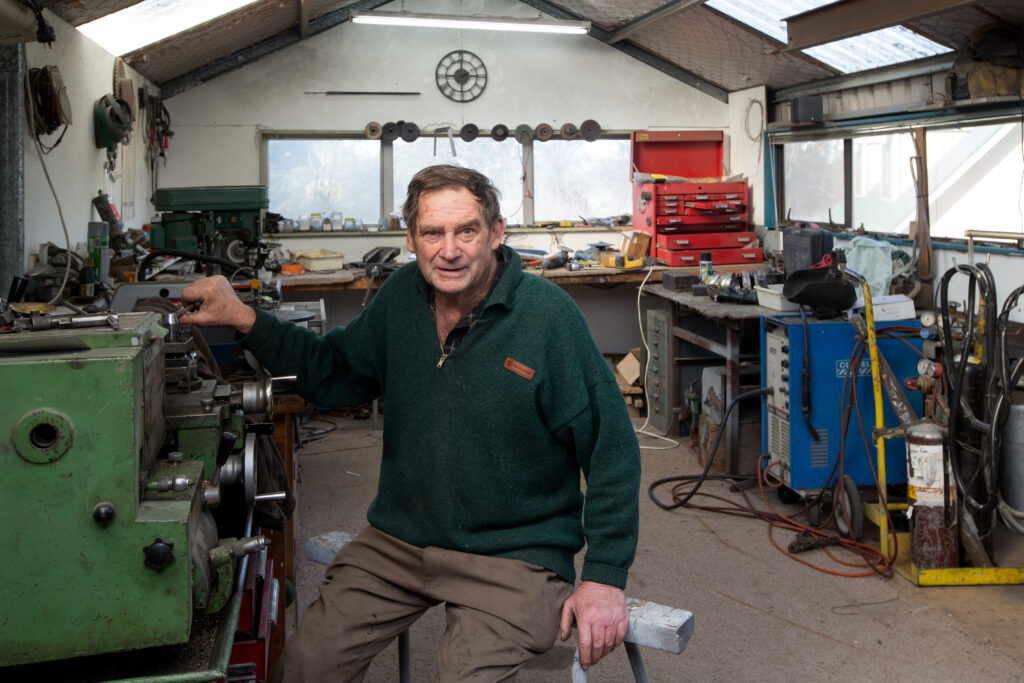
Ian Chamberlain’s shed is upstairs in the second storey of his double garage in Whanganui. Ian certainly needs all the room on the ground floor to park just a few of the vintage and classic cars he has restored over the past 30-odd years. And while the styles of car evoke a walk down memory lane, the vehicles look brand-spanking new.
There’s a fire-engine red Mark 1 Zephyr convertible, a more staid looking green and black 1917 Buick, the red and brassy 1906 Reo, and its miniature look-alike. A Model T truck houses the 64-note wooden organ, drum and xylophone combo Ian made from scratch. The instruments run on software that plays a repertoire of tinkly organ grinder tunes and is very popular at events in Whanganui and its surrounds.
Downstairs Ian keeps a large drill press, bench and vice. The rest of his gear is upstairs, where we perch on two saw stools. Overhead runs a gantry for hauling heavy parts up and down, like car engines and welders – anything he can’t carry up the stairs.
“The bench overlooks the driveway so I can see who’s sneaking in,” Ian says laughing. “The main disadvantage to being upstairs is that I can’t get a car up here, but otherwise it is quite handy. I don’t get cluttered up with cars and other bits and pieces.”
On a top shelf he’s got a stash of old fashioned gaslights, 1910-20 push bike and motorbike lamps, some of which are quite rare, and a sizeable brass car horn.
A couple of spare motors for the Model T sit in waiting under a shelf.
On the floor there is a metal water-blasting tray for beehive frames that he’s building for a friend. The tray will help separate the wax from the water so it won’t block the drains. He’s just adapting the same principles he used for a 30-foot (9metre) diameter construction he made for oil in his heavy engineering days.
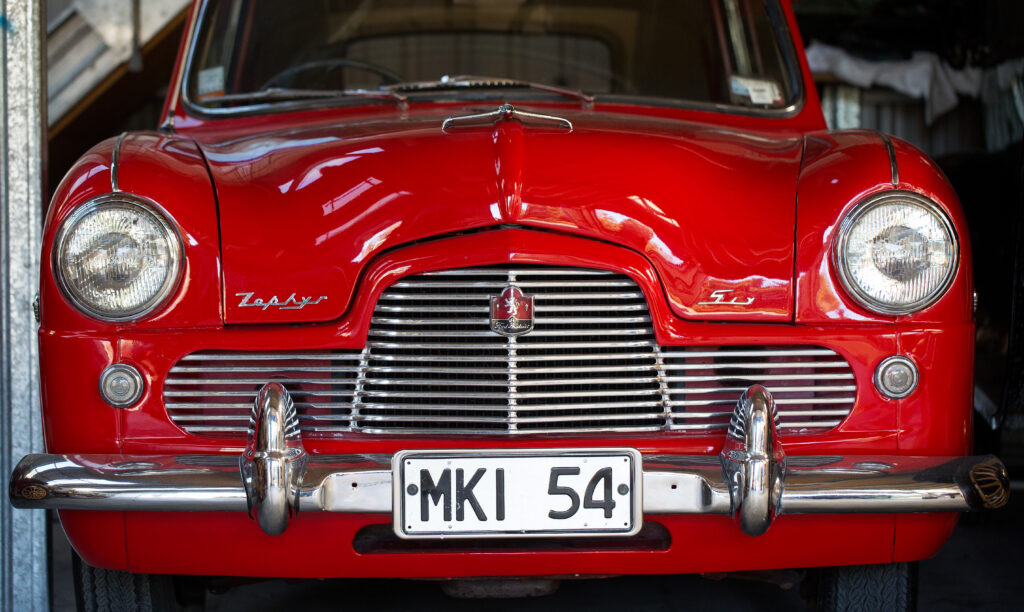
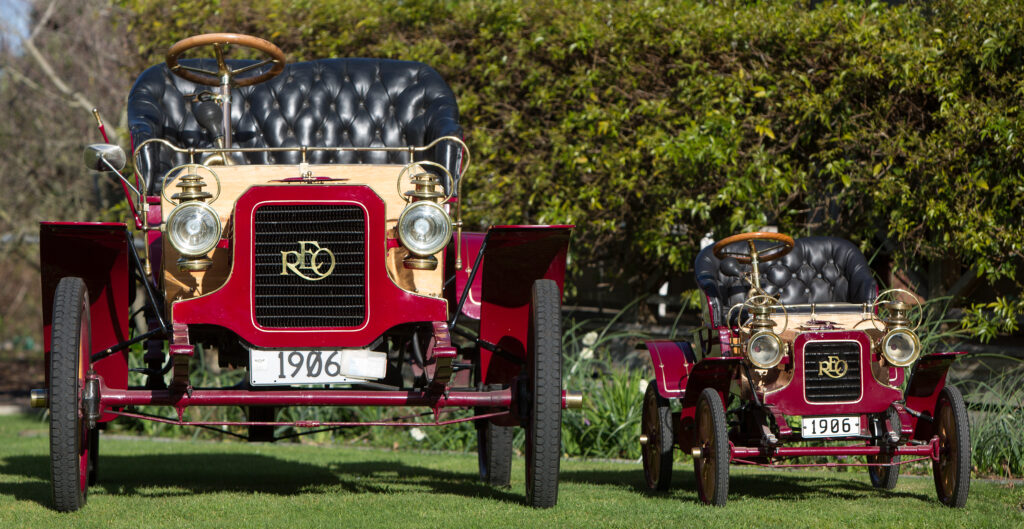
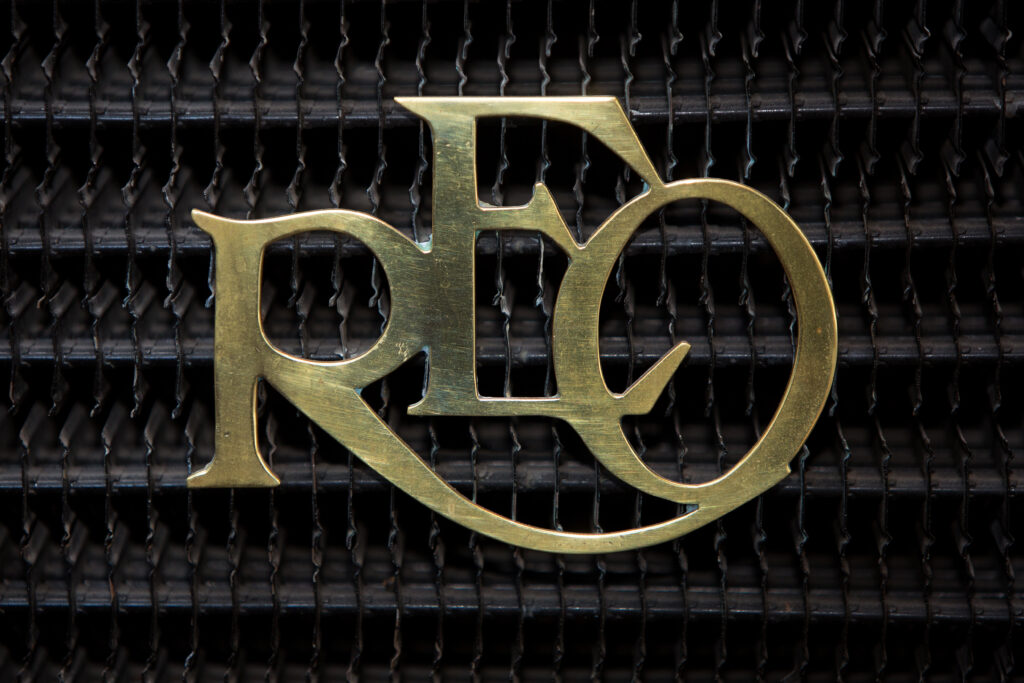
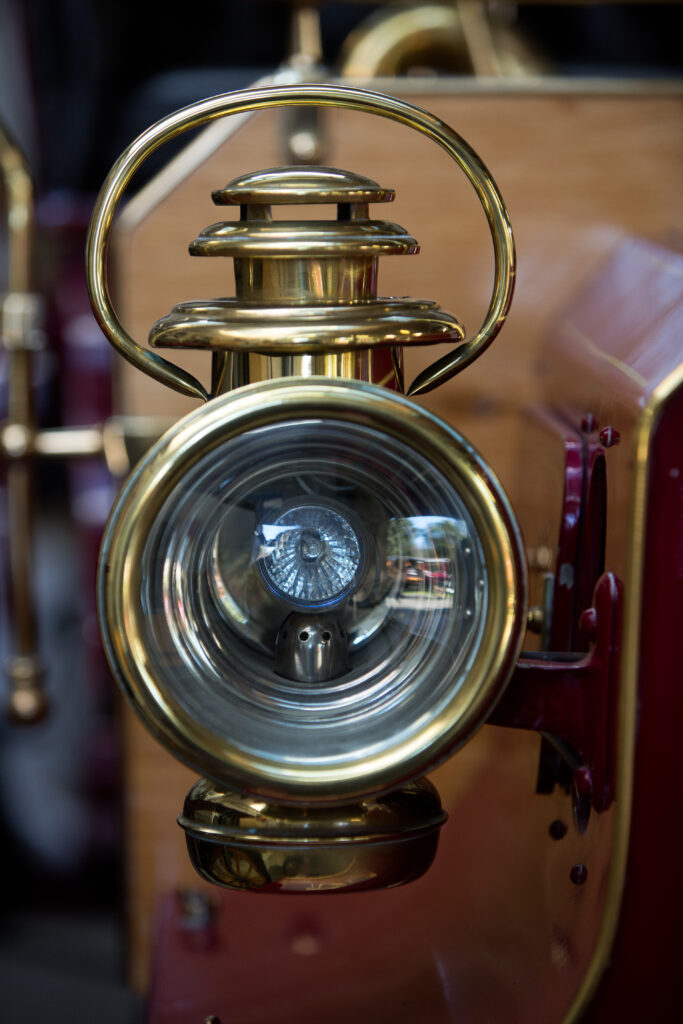
Ian’s workshop
It’s just a normal workshop, Ian points out. There’s a general assortment of power and hand tools: a power hammer for mudguards and spare parts, a seven-inch (17.7cm) grinder, drills, a planer, a skill saw and disk saw, a machine for polishing paintwork, various bolts, and bits and pieces. And, unusually, an antique, manual scroll saw with a treadle.
His medium-sized lathe (600 mm) “is just a cheap Chinese lathe but it does all I want it to do”. He has had it since 1979. There’s a big 8-inch (20cm) grinder, a scroll saw, and a small cheap drill press, “it does all I want for upstairs”; a MIG welder and gas welder, and a big, blue power hammer that he made. Some of this gear, such as the heavy spot welder, came from his former panel-beating business.
“I couldn’t fit it all in here or I’d have kept it all.”
Ian is continually doing jobs for others “instead of watching Coronation Street”. And they repay in kind by swapping parts or doing work for him.
“A bit of horsetrading you could call it. I’ll do a job for friends and they’ll give me stuff. Last week I finished a bit of rust on a vehicle for a friend and he said, ‘Oh your woodshed looks a bit empty,’ so a couple of truckloads of wood came up.”
“The main disadvantage to being upstairs is that I can’t get a car up here”
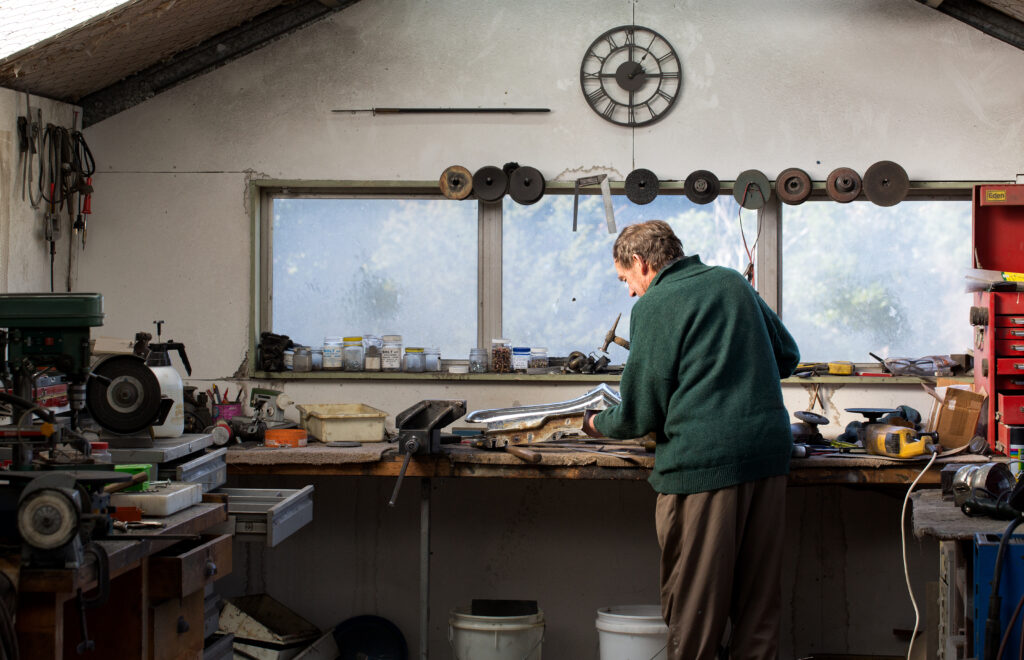
The cars
Ian and his wife Fay are members of the Vintage Car Club and Ian is frequently asked to work on other people’s vintage vehicles. A few months ago he completed major bodywork for a French 1902 Mathieu car, which he says is the only known car of its kind in the world. The car has since returned to its owner in Palmerston North.
The Mathieu has a piped chassis and the car still had the original backing. As is the case with many early cars, access to the interior was through a back door, stepping over the diff.
“It was in mint condition apart from a tiny bit of borer in the back. When I was doing it I had to leave everything as is – all the original lines and so on. I made a lot of the brass fittings; all the guards, the front panels and bonnet.” A friend in Foxton made the wooden frame.
Ian makes patterns for bodywork out of cardboard or scraps of tin.
“Once you get the shape looking the same as the photo you cut it all out.You make quite a few mistakes but you just throw it away and make it all again. The biggest problem with this sort of thing is that people are frightened to start because they are scared of making a mistake.
“The thing is to make it and if it doesn’t look right, well then it’s the pattern for your next model. You don’t know if it’s going to look right until you make it.”
The Mark 1 Zephyr convertible was “a bucket of rust” he pulled out of a boat shed on Kawhia Harbour. Ian had done his apprenticeship on Mark 1 Zephyrs so he knew what was needed to get it back on the road.
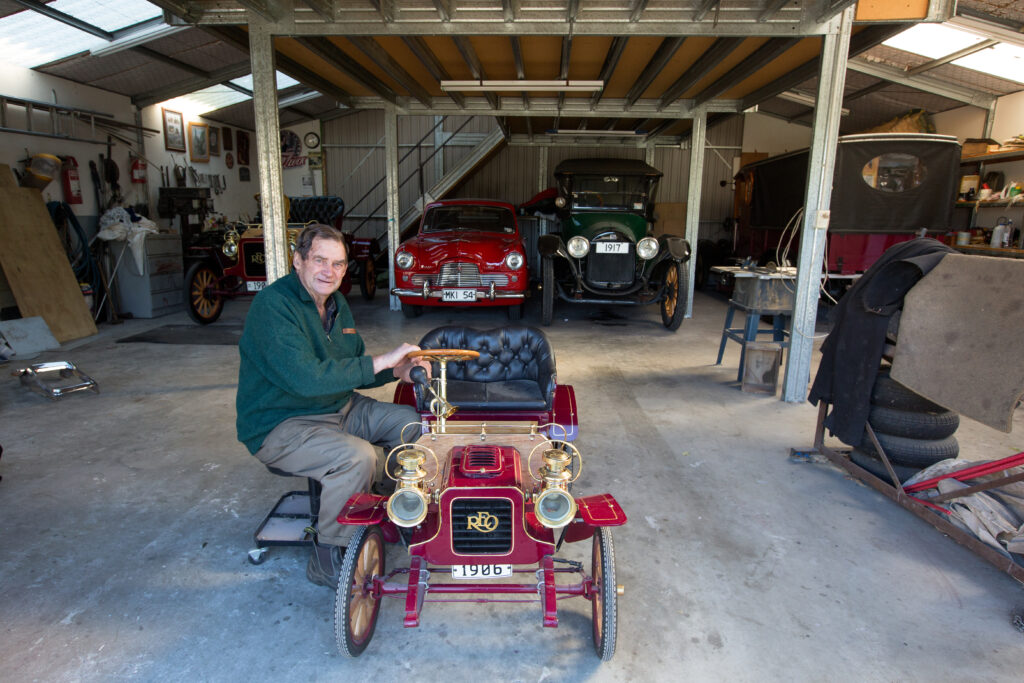
Get it right
He acquired the 1917 Buick 25 years ago from Trevor Dickie, the senior panel beater at his work. It took him about three months to figure out how to make the awkwardly shaped guards, keeping the lines straight. But after that it was a quick job.
“I said to Trevor, ‘I’m going to do them over the weekend’ and he said, ‘If you don’t do it right I’m going to kick your backside.’ Those were the good old apprenticeship days – you can’t do that now.
“So I took the guard in on the Monday morning – he had his own panelbeating shop in town – chucked it on the floor and said, ‘There you are that’s near enough.’ I said it didn’t take that long to make and he said, ‘You bloody liar.’ I’ve got a video of me doing it. He wouldn’t let me do the other guard until I’d shown him how I did it.
“The front guard has got a crown in it and a little flash on each side so [the challenge] was trying to get that line straight. It was quite simple when I’d figured it out; totally different from how I’d been taught. I just bolted flat bars around it.”
While the Buick job was underway one of his sons announced he was getting married in three months’ time and he wanted the car for the wedding entourage, so he finished it a couple of days before the wedding.
To restore the Reo Ian moved the car with all its bits and pieces into a bedroom in the sleep-out, which he built in front of the shed at their house in town. Their youngest son, who occupied the sleep-out, was on the cusp of moving out, but Ian couldn’t wait.
“I got a chainsaw and cut a hole in the wall then drove the car inside. I said, ‘The day you move out is the day I move in.’ He went crook because he wanted to sleep in.”
Ian sourced factory drawings for the Reo from a chap in California. It took him 14 months to restore. The miniature took 13 weeks to make. “It was easy. The drawings are the same size as the car.”
The Reo has the original motor, which Ian brought back to life, and America was again a source for the radiator and lights. The vintage car network is worldwide and he saw the lights advertised in the Horseless Carriage magazine.
Ian made the bonnet and grille, the front seat, and the steering wheel. He filled the bath with hot water to shape the guards, making a jig to bend them. “Fay kept going crook because I ran the house of hot water.”
Sometimes the shed spills over into the house but, as Fay says, “You’ve got to have an understanding wife.”
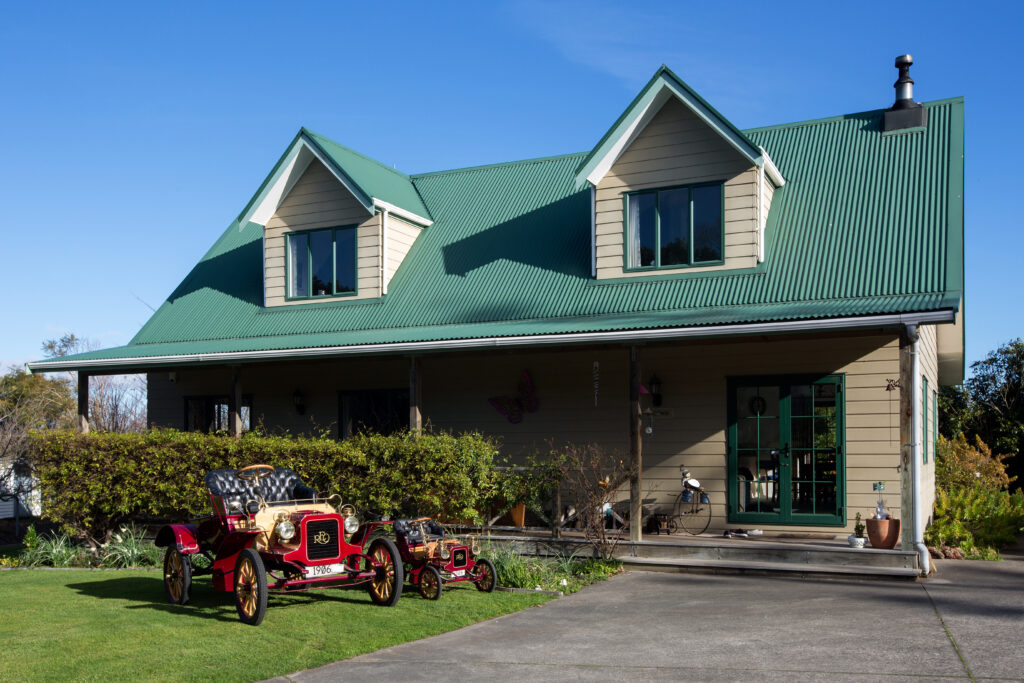
“A bit of horsetrading you could call it. I’ll do a job for friends and they’ll give me stuff”
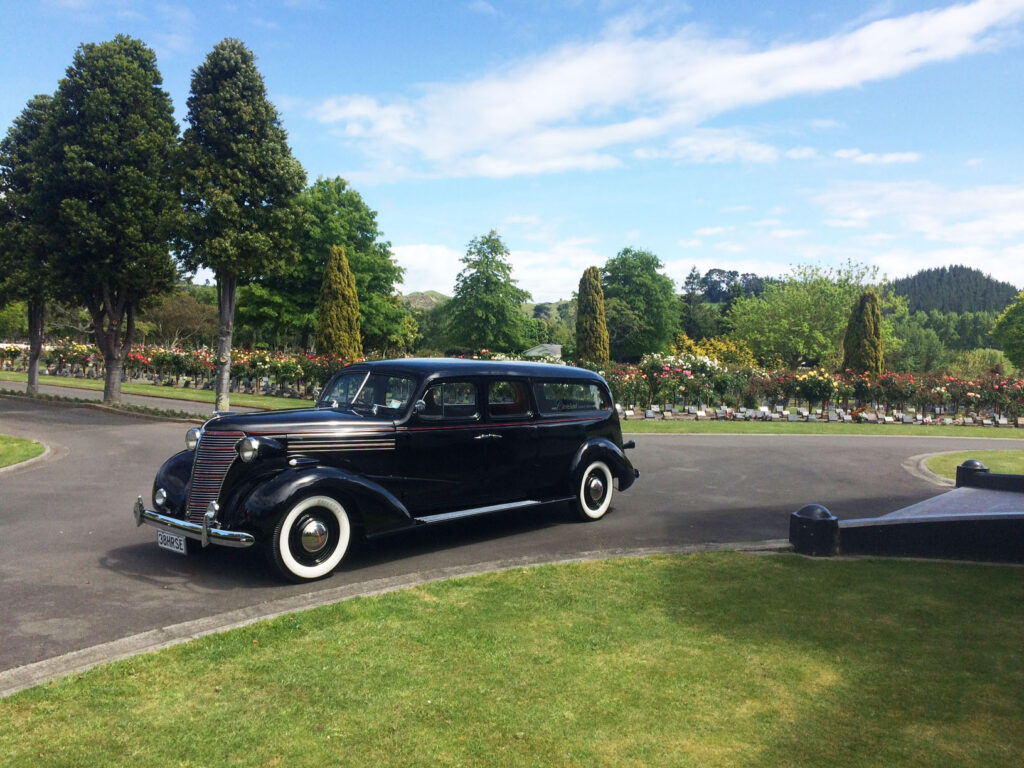
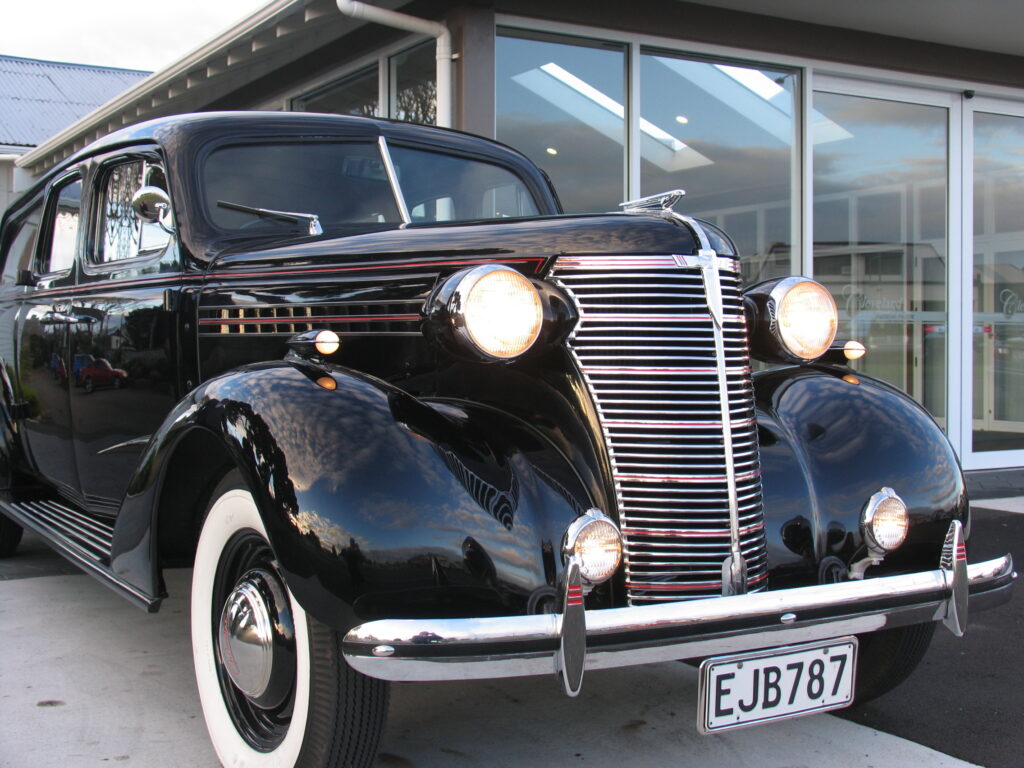
Endless adventures
The couple has had many adventures of the mechanical kind. Friends with old cars like to travel with Ian on hand and he has improvised their way out of a number of situations.
“We were all going in convoy to Dunedin. I was in the ute towing the Reo on the trailer. A Hillman broke down about 90km from Christchurch. It was raining and we couldn’t get it going. The only way was towing it. When we got into Christchurch the brakes gave out and it ran into the back of the trailer. The police passed going the other way and they were just shaking their heads. [The Hillman] bent all the grille, but we managed to pull it out. We took ages to get it going but found out the ignition had failed. We got some bits for it, then carried on.”
The same car broke a kingpin on the way back. A quick weld got it back to the North Island where they sourced the special part.
As a Vintage Car Club member Ian was one of a small committee that organised the public open day for the International Vintage Car Club Rally held in 2012 in Whanganui. Seven hundred vintage and classic cars parked at the Whanganui Racecourse.
“The racecourse was chocker, and the crowd of 35,000 people made it the biggest crowd they had ever had in Whanganui.”
“The biggest problem with this sort of thing is that people are frightened to start because they are scared of making a mistake”
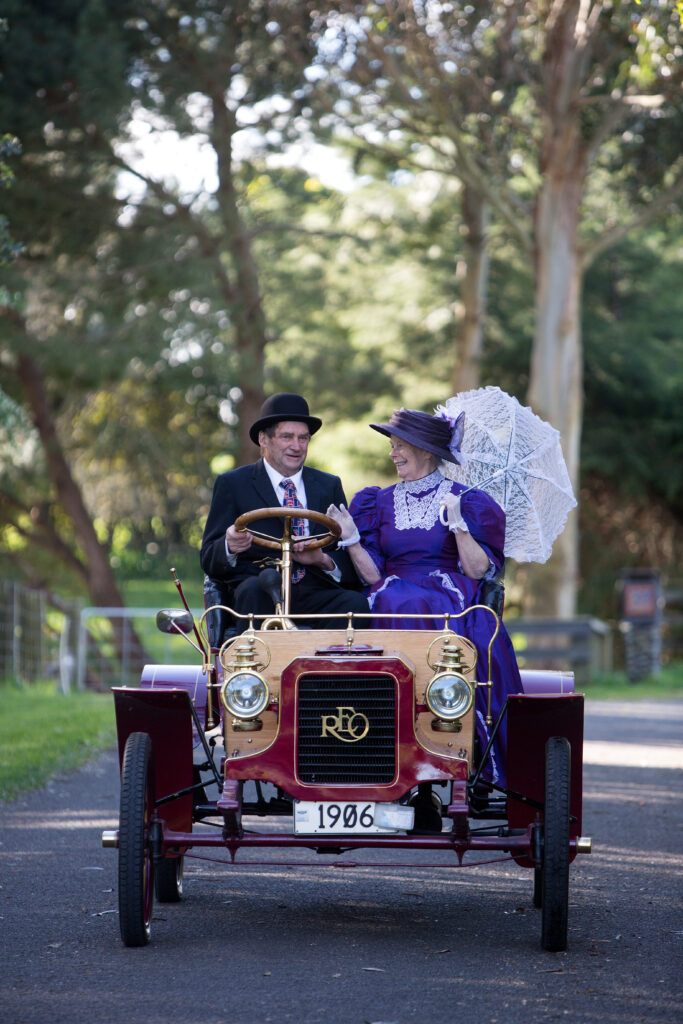
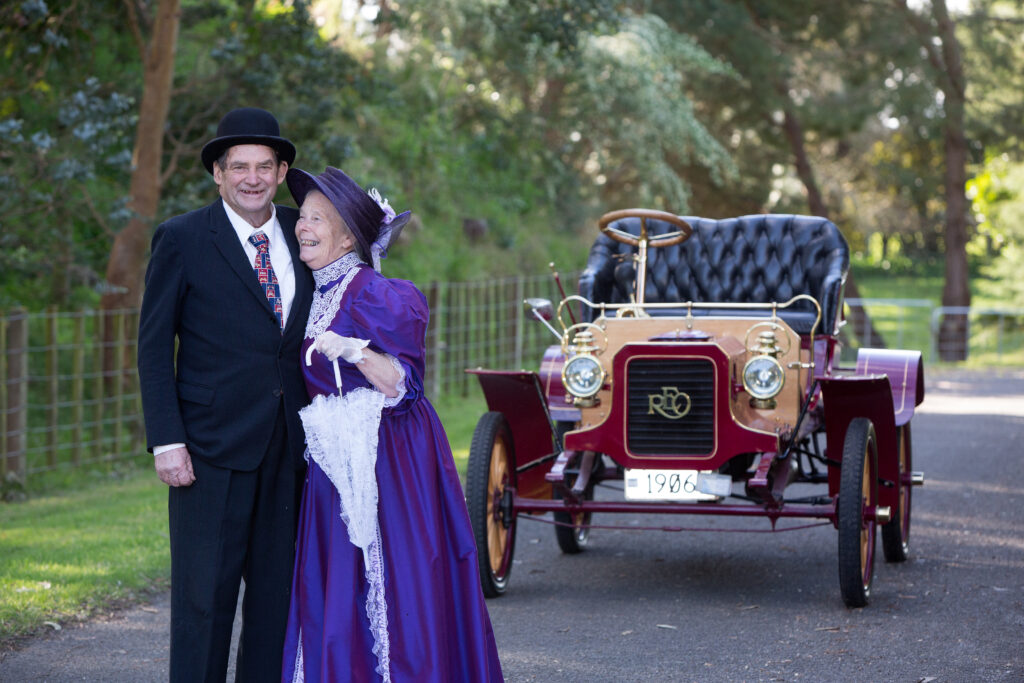
Waimarie Paddle Steamer
The morning of the interview with The Shed, Ian had been working on the Waimarie paddle steamer boiler, crawling inside to fit the faceplate and putting bolts and new castings inside.
“Last week we pulled the paddles off to re-bush it all and see how far the engineering firm had got with it.”
He has been involved with maintenance of the historic paddle steamer for the past five years.
“The skipper says, ‘Ian come here I want you to have a look at this.’ In other words he wants me to do something for him.”
Last year Ian set up the cradle to get the Waimarie out of the river for its five-yearly survey. He had a cost-effective idea about getting it out sideways.
“They said, ‘Oh you can’t do it that way.’ Then they came back to me and adopted my idea. They got all the experts in which ended up costing a lot more. We had to make a slip over by Dublin Street Bridge and one bloke came up with the idea of getting two traction engines to pull it out. We laid railway lines down and it came out quite easily.”
Instead of pulling it out bow first, the way it was previously set up, Ian changed the cradle so that the boat could be pulled out sideways. He called on engineering mates to lend him a workshop for a couple of months to do the work.
“I had to turn all the wheels around and reinforce it – two sets of railway lines turned sideways and two sets of bogeys for it to sit on. It took me about four weeks to change it all around.”
But there were delays with floods and Council permits, and the sandbank kept shifting.
“Then someone had the bright idea of making it an event. That made the permit easier to get. So we pulled it out, cleaned everything up and it was done.”
There were crowds of onlookers and the event was filmed and televised.
See this youtube clip https://www.youtube.com/watch?v=PRPq25Iia3Q
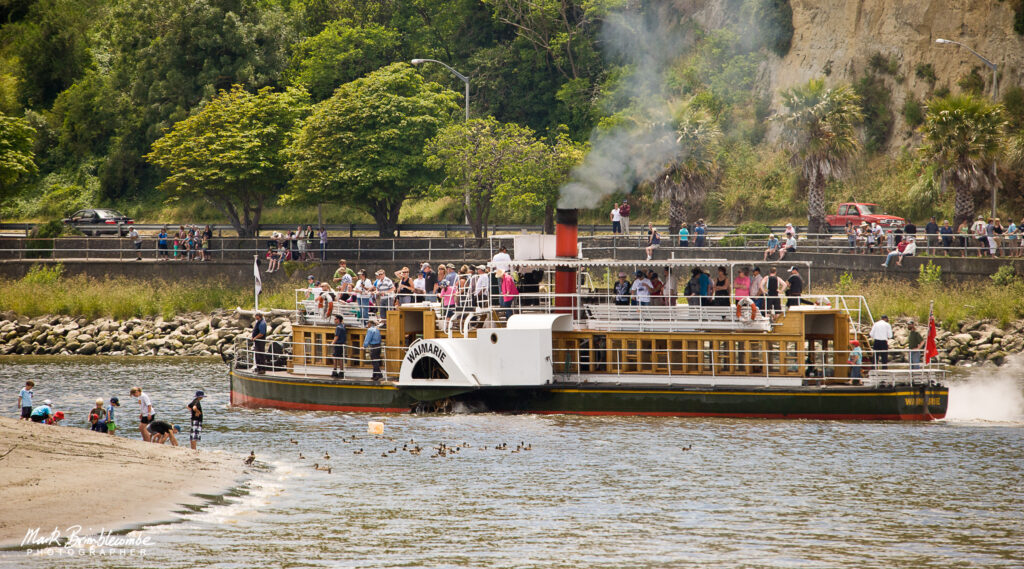
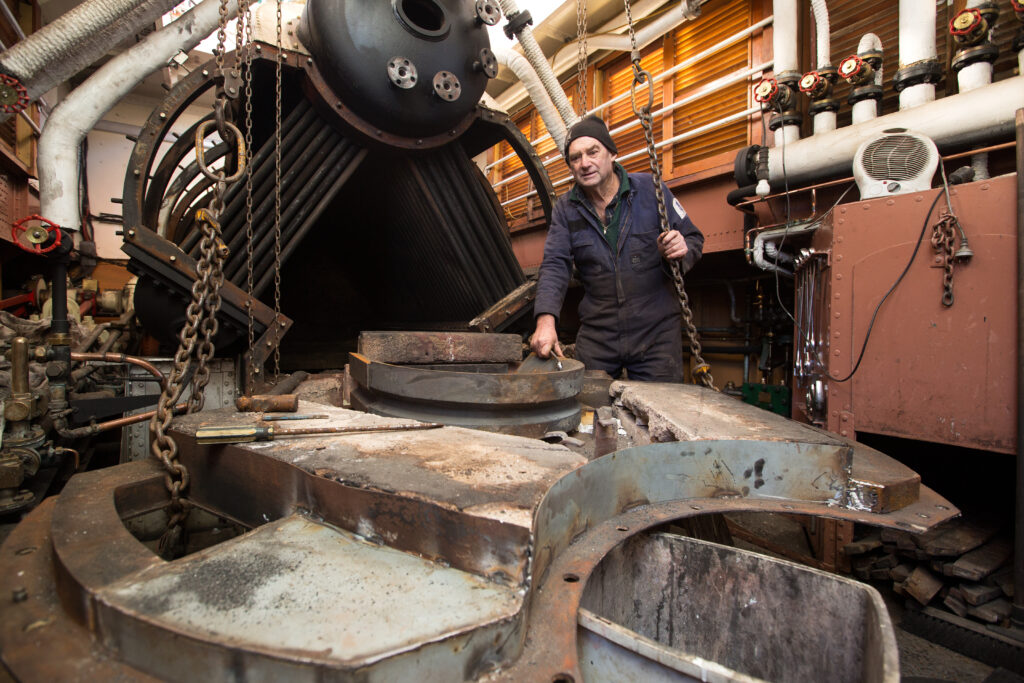
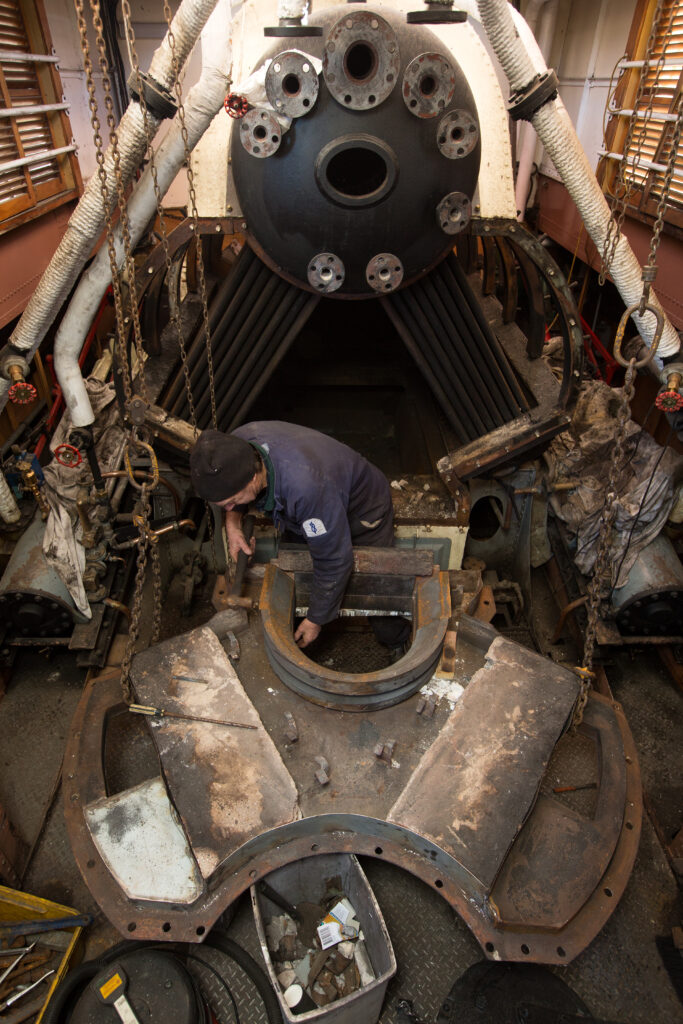
“Sometimes the shed spills over into the house but, as Fay says, ‘You’ve got to have an understanding wife.’”
A Sheddie Forever
An eternal sheddie, Ian has always had a place to do his own projects. He has lived most of his life in Whanganui and in 1943 was the only pakeha at Koriniti School up the river. Later, his family owned a farm at Westmere.
“As soon as you learn to walk you’ve got to do stuff on a farm. I was driving vehicles on the farm when I was 10.”
Ian and school was not a happy match so at 15 he started a panel-beating apprenticeship earning £2.10 shillings a week, and from that time on he came into his own. He also worked in heavy, hands-on engineering making, among other things, a 110-ton tanker buoy and building a dredge, before setting up his own panel-beating business.
He has had the odd accident, cutting his hands twice on a grinder when he used a disk from the big grinder on a smaller machine.
“It runs about three times the speed. I was taking the gearbox out of the Zephyr to fix the clutch. A piece broke out and it got away on me, so I was grounded for eight weeks.”
Despite cutting tendons Ian has regained full use of his hands. The second time it happened he injured just one hand so he reckons there won’t be a third. The hospital wasn’t pleased.
Another unusual project has had an equally unusual spinoff. Ian made a hearse for a local funeral director by cutting a 1938 Chevy in half, lengthening it, making all the chassis parts and lining it up so that it looks the part.
“I’ve been offered a free funeral,” he laughs.
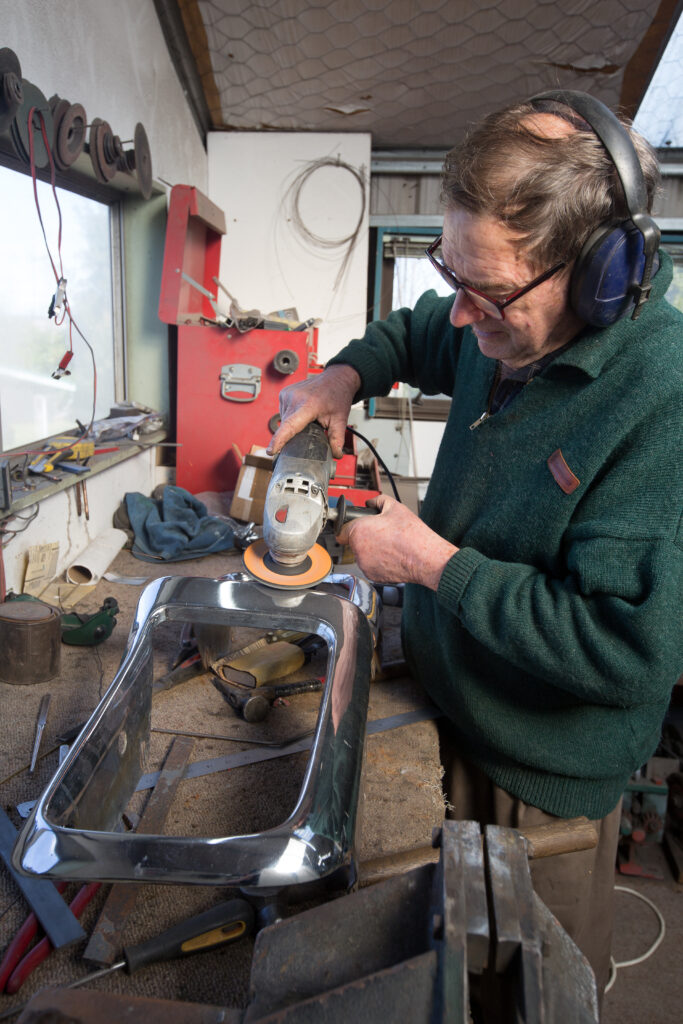
The organ
Ian made the organ 15 years ago and he says it was much the same as working on a car – just making the component pieces and putting them together.
“I don’t know why I made the organ. There was a parade through the town and I saw a bloke with a hand organ and I said, ‘Where did you get that from?’ He said to go on the Internet to find how to make it but warned that ‘whatever you do don’t make the 26-note organ.’ So me being me, I made the 26-note organ. Everything’s so close – within one millimetre. But then I thought I wanted something a bit better and ended up making the 64-note organ.”
The rectangular pipes, all a different length, are recycled rimu panels Ian salvaged from a demolition job instead of using it for firewood. To tune it he made the pipes a little bit longer and adjusted them according to a 4-inch water pressure tuning gauge he made. He had 130 pipes and needed more room, which is where the upstairs sitting room came in handy.
“He’s not musical, that’s the strange thing, but the organ has been a real asset. We’ve taken it to Virginia Lake and to lots of events around Whanganui,” says Fay.
The small hand-cranked organ grinder Ian made was at the time taking part in a Mary Poppins musical in New Plymouth.
